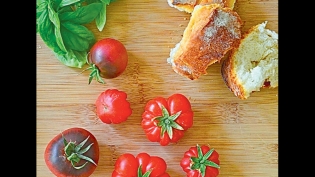Too Hot for Tomatoes
In our Gulf Coast climate, we normally plant our tomatoes between Valentine’s Day and the Ides of March. That means our tomato-planting season runs from a holiday rooted in ancient pre- Roman fertility celebrations to the date the Roman Republic collapsed. Without a good understanding of tomato culture, a potentially fertile and productive garden can still descend into a chaos of failure. Plant health starts with soil health and soil health starts with microbiology (we’ll save this discussion for a future date), and even after planting, there are some important steps to be taken in order to keep things democratic.
SOIL MOISTURE
Transpiration is the process by which water evaporates from leaves. It creates a suction that pulls water (the carrier for nutrients) out of the soil and to the rest of the plant. Heat itself is not what damages the plants. Rather, it is the increased evaporation and need for water that causes plants to wilt.
So, how can we help our tomato plants cope with Houston’s summer heat? Add a two- to three-inch layer of aged hardwood mulch (or fallen leaves) to cover the soil around your tomato plants. This helps retain moisture by lowering soil temperatures. It also adds organic matter to the soil, thus reducing the splashing of microbial diseases onto plant leaves. Secondly, use drip irrigation rather than hand-watering tomatoes.
HARVEST AND STORAGE
Tomatoes can be harvested at the first sign of color and held at room temperature until ripe. However, tomatoes ripened on the plant will have more flavor and nutrients. Store ripe tomatoes at room temperature in a dry area with air circulation, and avoid refrigerating your tomatoes. Temperatures below 55° can cause chemical changes that affect flavor.
USE
The tomato was nicknamed “poison apple” in the 18th century, when it was thought to cause illness and even death among upper-class Europeans. It wasn’t the tomato; it was the high lead content in the pewter plates they ate it from. Today, tomatoes are enjoyed in many cuisines, and many dishes. And never do they taste better than when their acidity is allowed to shine. If the ancient Romans had had access to tomatoes, they certainly would have celebrated fertility with the beauty of fresh-picked tomatoes.







